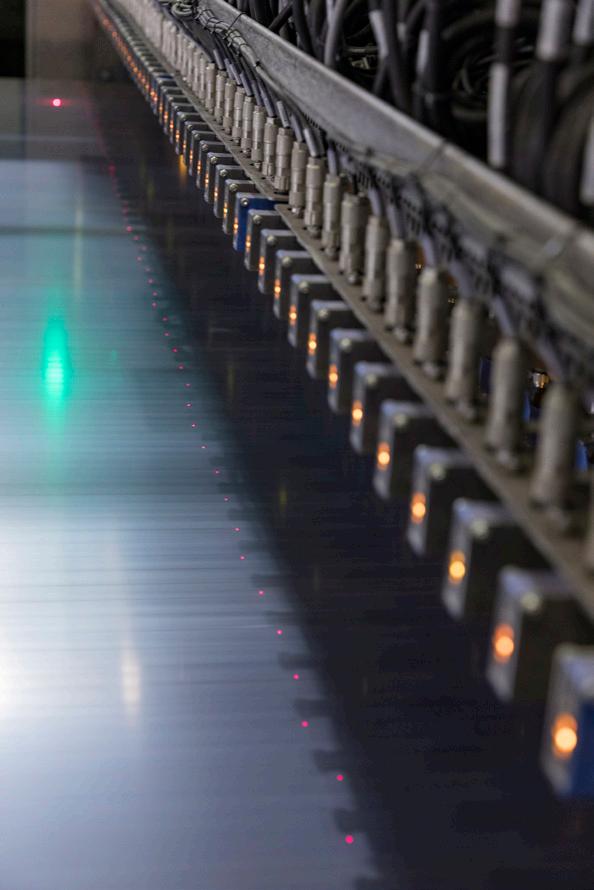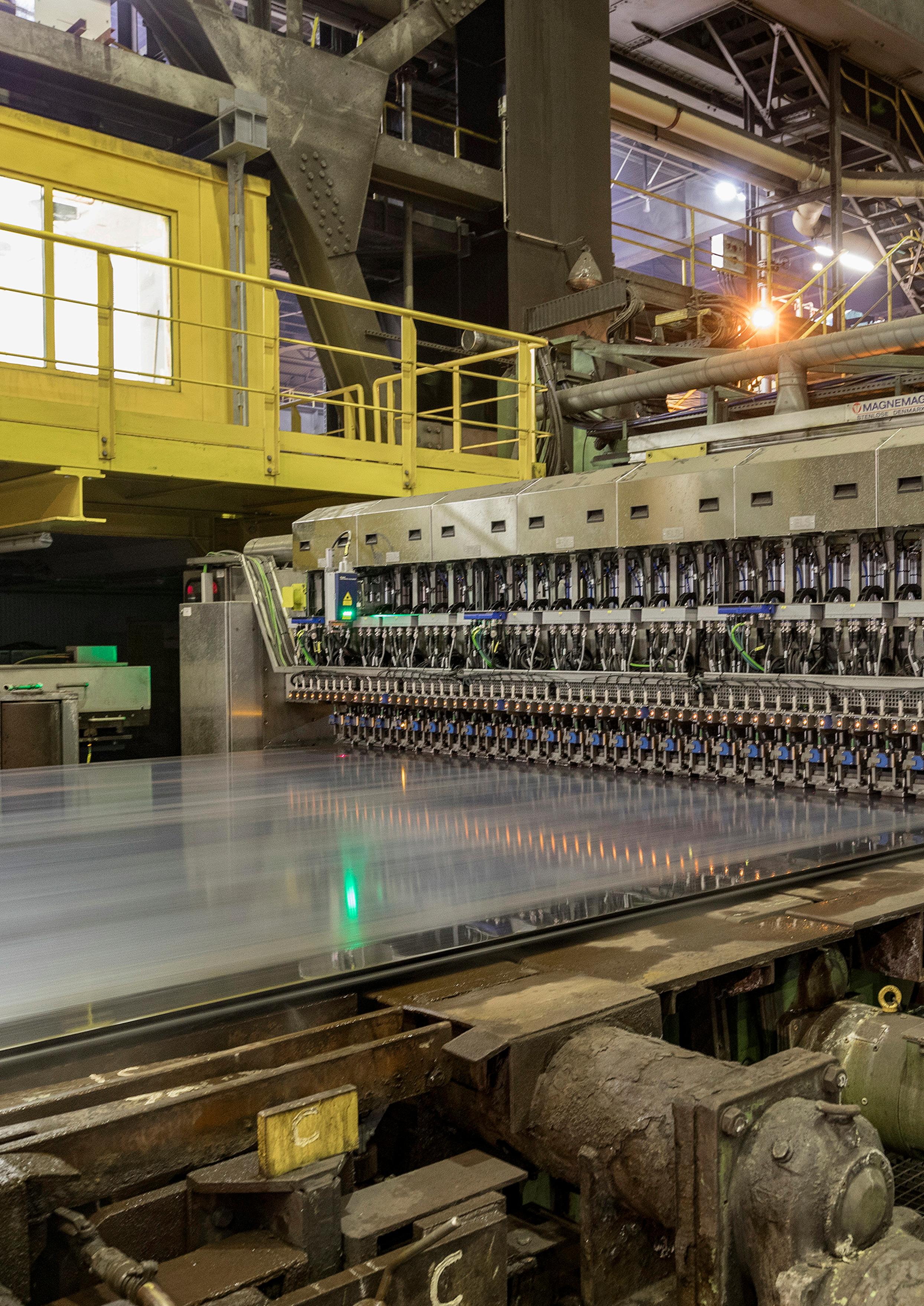
7 minute read
Testing for hard zones
Andreas Thieme, Dillinger, Germany, focuses on increased safety for natural gas pipelines, through attention to local hard zones on pipes.
Local hard zones, also called hard spots, are small areas on the surface of steel plates only a few tenths of a millimeter in thickness. Formed in pipes transporting sour natural gas, they are held responsible for sudden stress corrosion cracking in the through thickness direction. In order to reliably detect and eliminate these local hard zones during plate production, Dillinger, Europe’s leading heavy plate manufacturer, developed a special eddy-current testing system. This method has now been recognised by several oil and gas companies. First projects have begun, using pipes made of
D-TECT branded steel tested for local hard zones on a large scale.
Big changes in technology with niches for adapted ‘old’ technologies With what we know about global warming, the world must move energy generation from the old carbon economy towards new technologies that have less environmental impact. But this can’t be done by flipping a switch. It’s a long process, with a slow conversion from old to new, requiring bridge technologies that can secure a significant reduction in CO2 emissions. One of these bridging
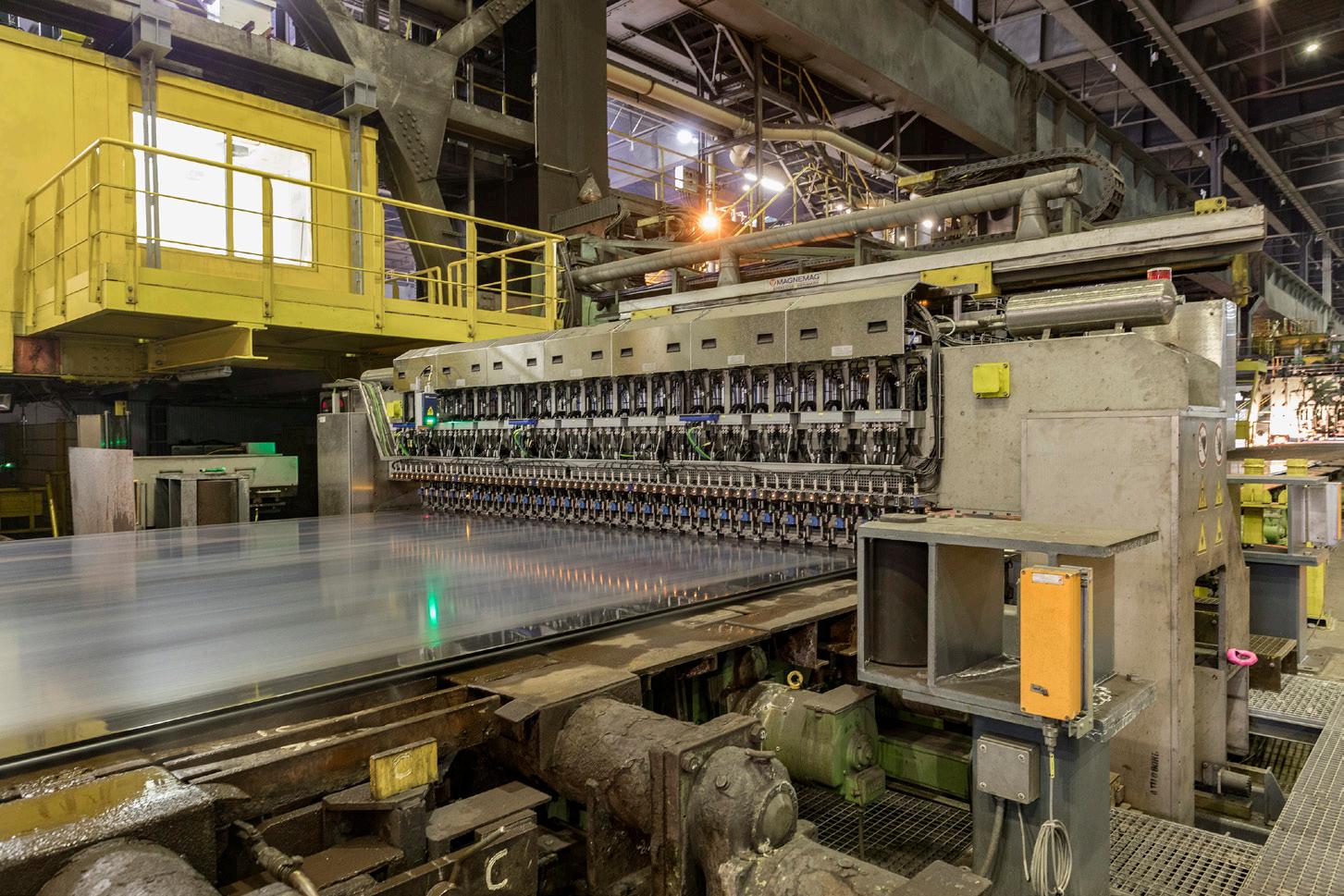
Figure 1. In order to detect and eliminate local hard zones reliably already during plate production, Dillinger developed a special eddy current testing system.
Figure 2. Dillinger, together with an industrial partner specialised in NDT, developed a testing method on basis of eddy current (EC) that is able to detect small hardness differences on the plate surface.
technologies is natural gas. The supply of this less harmful combustible has to be secured, of course in the most efficient way. There is only one reasonable solution: transport in pipelines. Pipes for the transport of oil and gas Although a pipe does not look very spectacular, it has a lot to accomplish. Pipelines transport natural gas at high pressures, often through inhospitable areas such as cold arctic tundra, hot desert or seismically active areas. They are often laid offshore in deepwater or at low temperatures. Besides mechanical loads, corrosion problems can be caused by the transported medium. In the worst case, it would exhibit acid sour gas characteristics that can cause various types of cracking inside the pipe wall or on the surface. This forces the designer to specify challenging mechanical, technological and corrosion properties at the material selection stage. Materials need to have special toughness at low temperatures, distinctive crack-stop behaviour and special corrosion resistance, to be adjusted evenly throughout the entire production. The design of pipelines is done with the best knowledge and belief of all parties involved: life, environment and invested capital have to be protected for the duration of the operation of the pipeline, which can last several decades. New insights are gained by analysing the operational life of pipelines and, usually, this knowledge comes in small steps of development. However, when unknown damage mechanisms cause larger failures, it can force the whole supply chain to develop and introduce new technologies on a short time basis, to solve the issue. Fatal stress corrosion cracking as a challenge A fatal failure of a pipeline in 2014 in Asia can be cited as an example: in presence of H2S as a promotor for the absorption of hydrogen in the steel, stress on the pipe and susceptible areas on the surface, a very severe sour gas attack occurred in a new, as yet unknown, form. This sour gas attack led to sulphide stress cracking (SSC) through the wall of the pipes that did not allow continuing operation. These cracks are assumed to be related to very thin local hard zones on the surface of the pipes. Since this case became known about, all manufacturers of plates for natural gas pipelines have dealt more or less intensively with the phenomenon that is occurring on high tech steel plates for sour service, produced by thermomechanical rolling and accelerated cooling (TM+ACC). In the meantime, local hard zones have been well investigated. It became clear that the formation of these zones is generally related to several steps in the production process for these type of plates.
These local hard zones have four characteristics: ) Their hardness is well above the hardness level of the base material.
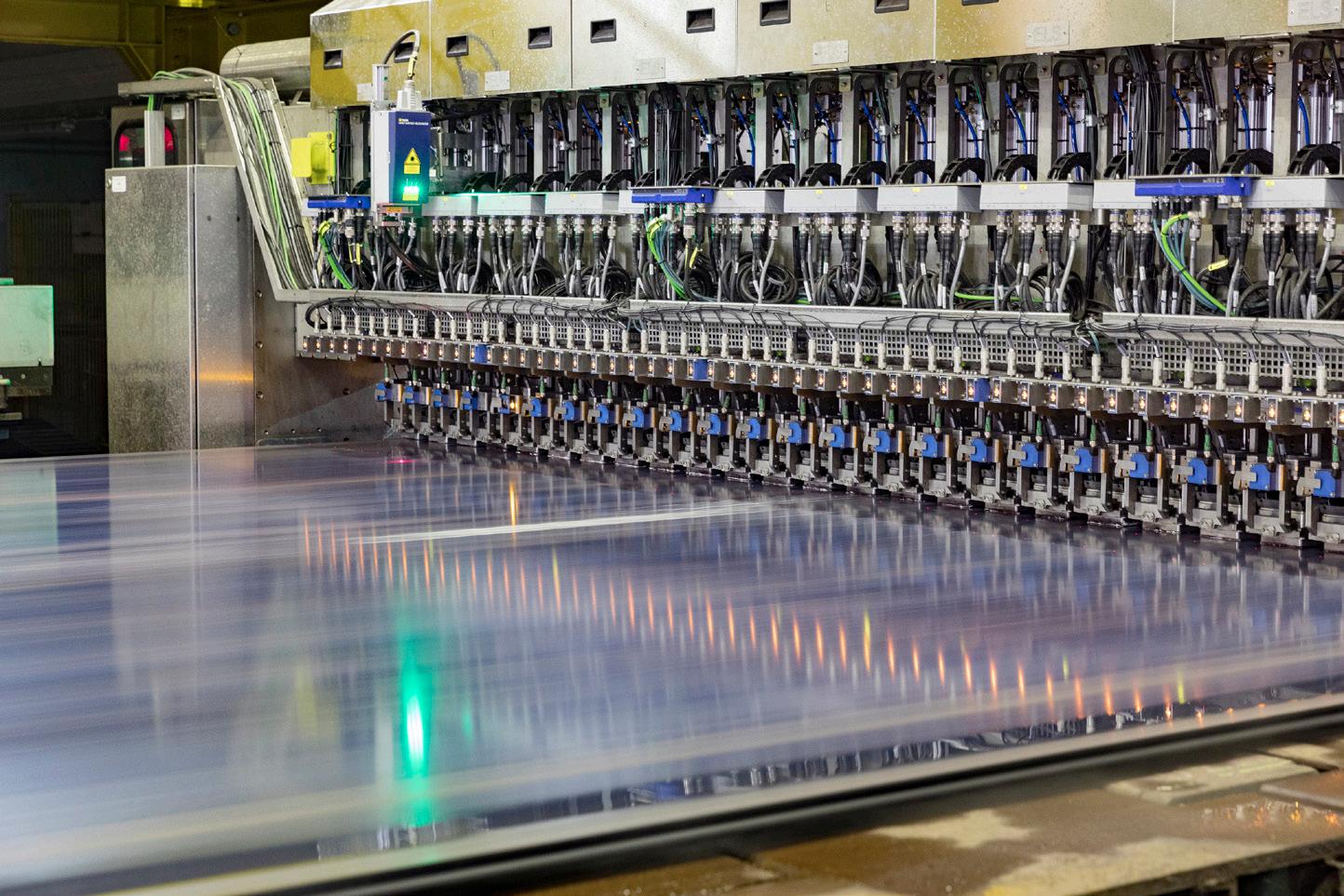
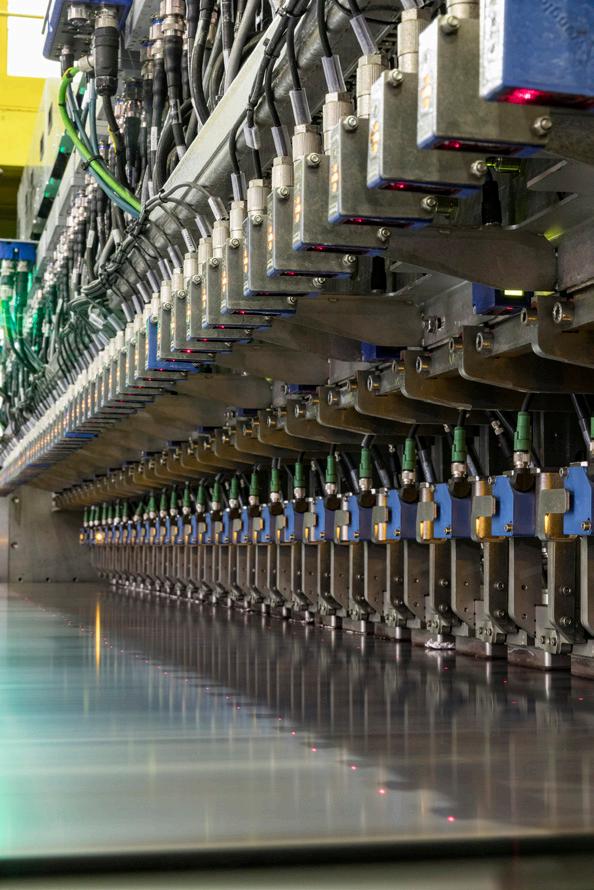
Figure 3. Eddy current testing (ECT) is a well-known and proven testing method used in steel production.
) With a thickness of a few tenths of a mm, these hard zones are very thin.
) Their occurrence over the plates is irregular and rare.
) Research showed that they cannot be prevented completely.
Conventional hardness testing methods are not able to detect these zones on the plates, as they have lateral dimensions of only a few centimetres and are distributed on plates with a rolled length of up to 40 m.
Problem solving for current sour service pipeline projects After defining the harmful phenomenon of local hard zones, most oil and gas majors no longer allowed the use of TM+ACC material for the transport of sour natural gas. However, due to its advantages in terms of mechanical/technological properties, and its efficiency, it is still a first choice for both production and processing. Therefore, every attempt had to be made to regain confidence in this type of material, and to find a technical solution to solve this issue for the whole industry.
The solution: inline inspection for local hard zones As it is clear that local hard zones cannot be avoided completely, a method to find them on the plates in a largescale production had to be developed. In order to achieve this, Dillinger – together with an industrial partner specialised in NDT – developed a testing method on basis of eddy current (EC) that is able to detect small hardness differences on the plate surface. Eddy current testing (ECT) is a wellknown and proven testing method that has been used in steel production, for example to detect cracks on hot wide strip materials. In co-operation with Dillinger, plant engineers and research institutes, the system was adapted in such a way that differences in hardness on the surface were detectable. The system detects areas of diameters 20 mm and above by using physical characteristics of the different structures in comparison to the base metal. These show with a certain threshold the hardness increase versus that of the base. These indicated areas can be repaired with light grinding. The eddy current device, currently in operation in both of the Dillinger plate mills in Germany and in France, tests plates inline the production without any interruption of the flow. It enables Dillinger heavy plate mills to check 100% of the surface of the plates on both sides for the occurrence of these local hard zones. Orders in large quantities, as is typical for pipeline projects, are able to be processed. All plates tested on the appearance of local hard zones are marked with the brand name D-TECT (Dillinger - Totally Eddy Current Tested).
Stakeholders are convinced Since there are currently no standards or specifications that deal with this subject, it was necessary to approve the testing method in the production of heavy plates. Most importantly, the testing and final approval of the method and the installation had to be done in partnership with the end customers, the oil and gas majors. Together with them, a test programme on the basis on the Dillinger ECT procedure was established. The sensitivity of the system and the probability of detection (POD) were demonstrated. This approach for verifying new test methods is described in DNV.RP-F118 and in mathematical models. Test plates with different kinds and sizes of artificial and natural local hard zones, covering the known different material structures responsible for hardness variations, were driven through the EC device. On the one side, the detectable minimum size of these areas was checked depending on size and thickness of the hard layer. On the other hand, the repeatability of the test was determined. At the end of the test, it could be proven that the system could find hardened areas in sizes of 15 mm in diameter and above, having the same thickness of 100 µm as the natural ones. Further, it was shown in multiple successive tests that the reproducibility was very high. As the artificial hard zones were circular and significantly smaller than those occurring naturally in combination with the high reproducibility, it can be stated that the system fulfills the task to detect local hard zones in the plate production safely.
Both the POD of the eddy current test device and test procedure were approved by several oil and gas companies. Dillinger will be the first supplier for upcoming complex sour gas projects, especially in the Middle East. Through its subsidiary Europipe, 160 000 t of plate for the Qatargas NFPS project will now be supplied exclusively by Dillinger from Germany and its identically equipped sister plant in Dunkirk, France. As a special highlight, owing to the current restrictions on travel, the inspection of the plate production can be performed remotely with the Dillinger myE-Service. This system allows following up all relevant production steps directly and inspection of all the material testing on a web based platform.
